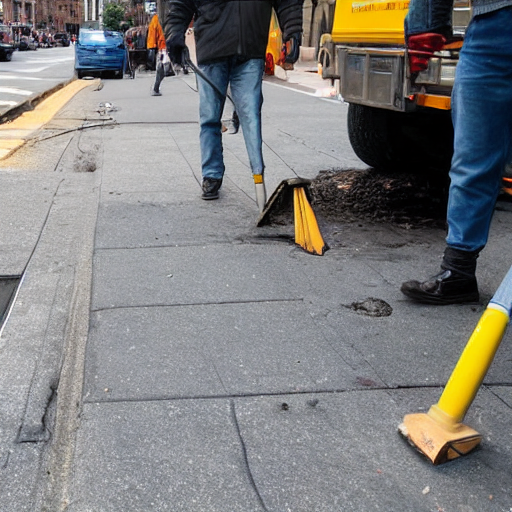New York City, the city that never sleeps, is also the city that never stops shuffling its feet. Millions of pedestrians pound the pavement daily, making the city’s sidewalks a crucial artery for urban life. But maintaining these vital pathways is a constant challenge, and sidewalk construction in NYC is a fact of life for residents and visitors alike. This article delves into the complexities of sidewalk repairs and replacements in the Big Apple, equipping you with the knowledge to navigate the sometimes-disruptive, yet necessary, process.
Why Sidewalk Construction is Essential
NYC’s sidewalks face a constant barrage of wear and tear. From the relentless freeze-thaw cycles of winter to the sheer volume of foot traffic, cracks, holes, and uneven surfaces become inevitable. These damaged sidewalks pose safety hazards for pedestrians, with the potential for trips, slips, and falls.
Beyond safety, a well-maintained sidewalk is essential for:
-
Accessibility: Cracked or uneven sidewalks can create significant barriers for people with disabilities, particularly those using wheelchairs or walkers.
-
Aesthetics: Smooth, well-repaired sidewalks contribute to the overall visual appeal of the city’s streetscape.
-
Drainage: Properly sloped sidewalks ensure efficient drainage of rainwater, preventing water from pooling and creating icy patches in winter.
Who’s Responsible for Sidewalk Repairs?
The responsibility for sidewalk maintenance falls primarily on property owners. According to Section 19-152 of the New York City Administrative Code, property owners are obligated to keep the sidewalks adjoining their properties in a good state of repair. This includes repairing cracks, holes, and uneven surfaces, as well as removing snow, ice, and debris.
However, the city also plays a role. The Department of Transportation (DOT) is responsible for inspecting sidewalks and issuing violations to property owners for neglected repairs. If a sidewalk defect isn’t addressed within 75 days of a violation notice, the DOT may step in and perform the repairs itself, charging the property owner for the work.
The Sidewalk Construction Process
So, you’ve noticed a damaged sidewalk in front of your property, or you’ve received a violation notice from the DOT. Here’s a breakdown of the sidewalk construction process in NYC:
-
Hiring a Contractor: Unless the repair is very minor (less than 25 square feet and not a violation), you’ll need to hire a licensed contractor to complete the work.
-
Permits and Inspections: The contractor will need to obtain a sidewalk opening permit from the DOT before starting construction. This permit application process typically involves submitting detailed plans and paying a fee. Inspections will be conducted by the DOT throughout the construction to ensure adherence to regulations.
-
Construction: The specific steps involved in construction will vary depending on the severity of the damage. Generally, the process involves:
-
Demolition: Removing existing damaged sidewalk flags (the concrete slabs).
-
Excavation: Preparing the base for the new sidewalk.
-
Sub-Base Installation: Laying a foundation of crushed stone or gravel for stability.
-
New Sidewalk Installation: Installing new sidewalk flags, ensuring proper alignment and slope.
-
Curing: Allowing the concrete to cure properly before pedestrian use.
-
Planning for Disruption
Sidewalk construction inevitably disrupts the flow of pedestrian traffic. Here’s how to manage these disruptions:
-
Signage: The contractor is required to post clear signage notifying pedestrians of the construction and any detours.
-
Pedestrian Access: Maintaining a minimum of five feet of unobstructed sidewalk for pedestrian passage is mandatory. If this isn’t possible, an “Occupancy of Sidewalk Permit” is required.
-
Communication: Property owners should communicate with local businesses and residents about the construction schedule and potential disruptions.
Additional Considerations
-
Cost: The cost of sidewalk repairs can vary depending on the size and severity of the damage, as well as the materials used. Property owners are responsible for all costs associated with the repairs.
-
Tree Roots: Tree roots are a common culprit in sidewalk damage. If tree roots are causing the damage, a permit from the NYC Parks Department may be required before construction can begin. The contractor will need to take steps to protect the tree during repairs.
Historic Districts: Special regulations and materials may apply for sidewalk construction in historic districts. Property owners in these areas should consult the NYC Landmarks Preservation Commission for guidance.

